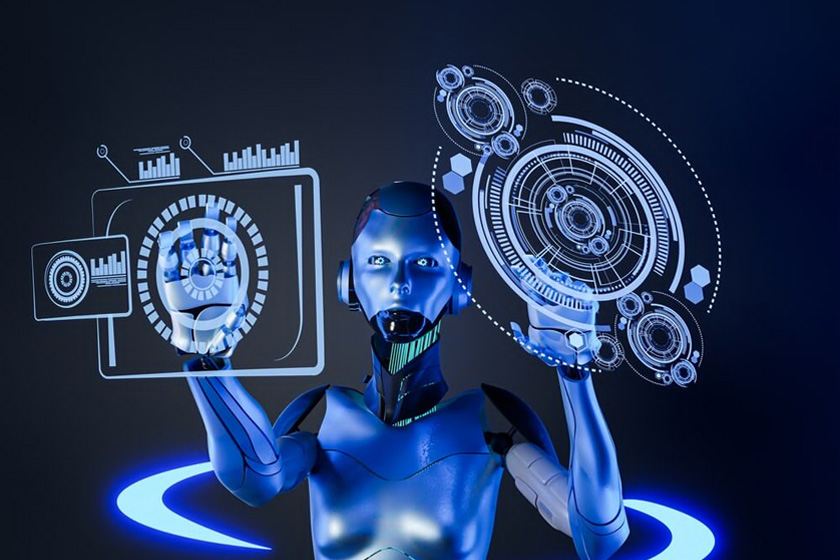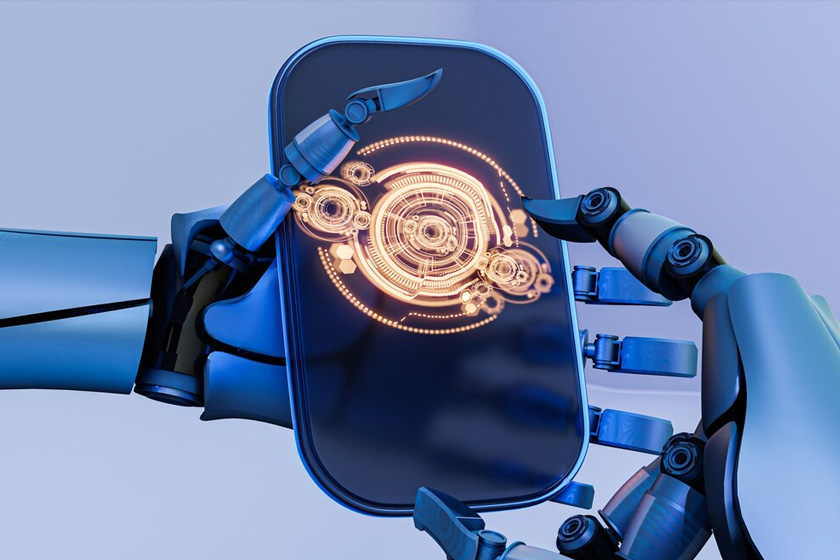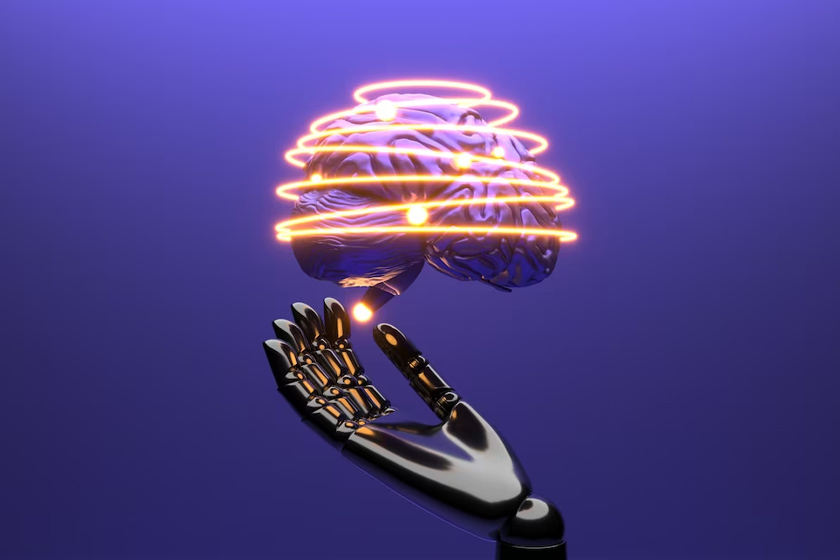Have you ever wondered how the “People you may know” feature on Facebook always provides you with an accurate list of people you are familiar with in real life and can connect with on Facebook? How does Facebook know about this, and how does it provide these recommendations? Machine learning is the answer to this question. But what is machine learning?
This article will answer this and your other possible questions about machine learning to help you better understand these concepts.
What is machine learning?
Machine learning involves analyzing and interpreting data structures and patterns as a subset of artificial intelligence. Machines can learn autonomously without being explicitly programmed in this field of computer science.
So, the algorithm is fed data instead of code written for another problem. It analyzes the data and makes recommendations and decisions based solely on the input data without human intervention.
The point to note here is that machine learning algorithms can gain knowledge from their past experiences just like humans! Algorithms learn from new data without changing their code as they process it. Machine learning algorithms may produce inaccurate results but can improve their performance over time.
A brief history of machine learning
Machine learning was introduced in 1950. In the early 1900s, Alan Turing wrote an essay titled “Can Machines Think?” which was published.
The Perceptron model is the first neural network designed for computers, and it was created by Frank Rosenblatt in 1957. Neural networks are machine learning algorithms modeled after the human brain, and there are various types. Neural networks include recurrent neural networks (RNN) and convolutional neural networks (CNN). Perceptrons are also used in supervised learning for binary classification.
Two years later, in 1959, Bernard Widrow and Marcian Hoff developed two neural network models: ADALINE, which recognized binary patterns, and MADALINE, which removed echos from telephone lines.
Around 1967, the Nearest Neighbor algorithm allowed computers to use rudimentary pattern recognition.
It has been suggested that Gerald de Jong originally proposed the concept of explanation-based learning, in which a computer analyzes data and creates general rules to remove irrelevant information.
During the 1990s, work on machine learning shifted from a knowledge-based approach to a more data-driven approach. During this period, scientists began creating computer programs to analyze large amounts of data, draw conclusions, and learn from the results. Finally, over time and after numerous improvements, machine learning was presented in its present form.
Why is machine learning critical?
Machine learning is crucial for several reasons. Companies benefit from machine learning because it gives them a better understanding of customer behavior trends and business operating patterns. In addition, it facilitates new product development. Machine learning has become a major component of business operations in many organizations today, including Facebook, Google, and Uber. Many companies now rely on machine learning as a competitive advantage.

How does machine learning work?
Machine learning algorithms handle and interpret vast amounts of complex data to make informed decisions. These sophisticated algorithms acquire knowledge from data based on specified inputs. Understanding the mechanics behind these algorithms and machine learning systems is crucial for their practical application in future scenarios.
The process begins by training the algorithm on training data to develop a predictive model. The algorithm then attempts to predict new input data. These predictions are assessed for accuracy, and if the outcomes are not as anticipated, the training cycle is repeated until the algorithm achieves the desired results. This iterative learning process allows machine learning algorithms to improve autonomously, enhancing their accuracy over time. Once the algorithm reaches satisfactory accuracy, it can be deployed for practical use.
To illustrate, consider how machine learning operates using a common scenario:
Imagine searching for “Lion images” on Google, and Google presents accurate results. The behind-the-scenes process involves:
- Google collects numerous image datasets labeled “Lion.”
- The algorithm analyzes these images for specific pixel and color patterns to predict if an image represents a “lion.”
- Google’s algorithm might make random guesses to identify patterns.
- Whenever errors occur, adjustments are made to refine the algorithm’s accuracy.
- Eventually, a system similar to the human brain learns from these patterns and can precisely identify “Lion” based on these patterns, providing accurate search results.
Suppose your task is to develop a machine-learning algorithm that differentiates between lion and tiger images. The process entails:
- Gathering extensive datasets of Lion and Tiger images.
- Training the computer to detect patterns that distinguish lions from tigers.
- After the training phase, the model is tested with various images to determine its ability to identify lions and tigers. A well-trained model will accurately perform such tasks.
Understanding the operational framework of machine learning algorithms illuminates the path to exploring the various types of machine learning methodologies.
Types of machine learning
Machine learning is a core aspect of artificial intelligence (AI). Machine learning algorithms adopt a learning strategy that enables them to improve prediction accuracy. The nature of the data dictates the choice of machine learning algorithms, and the predictions sought. Here, we explore the primary machine learning methods.
- Supervised Learning: This methodology involves training algorithms on a dataset where both the inputs and the expected outputs are provided. This enables the algorithm to learn the correlation between inputs and outputs, facilitating accurate future predictions.
- Unsupervised Learning: Unlike supervised learning, unsupervised learning independently identifies patterns and relationships within datasets without predefined labels.
- Semi-supervised Learning: A hybrid approach, semi-supervised learning utilizes labeled and unlabeled data for training. This method allows algorithms to enhance their learning from a broader data set, improving performance.
- Reinforcement Learning: This learning technique works on the principle of reward feedback and is typically used in scenarios where a sequence of decisions must be made. Algorithms learn to achieve tasks by maximizing cumulative rewards, often through trial and error.

Machine Learning Applications
One of machine learning’s quintessential applications is developing sophisticated recommender systems, such as the one powering Facebook’s news feed customization. By analyzing user interactions and preferences, machine learning algorithms can tailor content feeds to individual users, enhancing engagement and user experience.
Machine learning’s versatility extends to various domains, including:
- Customer Relationship Management (CRM): Enhancing customer service through predictive email management and response suggestions.
- Business Intelligence (BI): Augmenting data analysis and anomaly detection to inform strategic decisions.
- Autonomous Vehicles: Improving safety and navigation through real-time object detection and response systems.
- Virtual Assistants: Refining speech recognition and command interpretation for better user interaction.
- Human Resource Information System (HRIS): Streamlining recruitment by identifying the most qualified candidates through pattern recognition.
Selecting an Appropriate Machine Learning Model
The process involves initial data review, preparation, and labeling, followed by algorithm selection, testing, and iterative refinement to achieve optimal accuracy. This strategic approach ensures deploying a machine-learning model well-suited to the problem.
What is the difference between AI, machine learning, and deep learning?
- Artificial Intelligence: The broadest category, encompassing systems that simulate human intelligence.
- Machine Learning: A subset of AI focused on algorithms that learn from data.
- Deep Learning: A narrower subset of machine learning utilizing neural networks for complex pattern recognition.
Despite their differences, they are crucial in advancing technology and organizational growth.
Advantages and Disadvantages of Machine Learning
Despite its potential for profound insights and operational efficiencies, machine learning has challenges, including high costs, data bias, and ethical considerations.
As mentioned, machine learning includes many uses, from predicting customer behavior to forming operating systems for self-driving cars. Now, we will explain more fully the advantages and disadvantages of machine learning.
Regarding benefits, machine learning can help companies understand their customers more deeply. Machine learning algorithms can learn relevant patterns and associations by collecting customer data and correlating it with user behavior over time, helping businesses align their product development and marketing initiatives with customer demand.
Some companies also use Google’s algorithms as the core of their business models. For example, Uber uses algorithms to match drivers with customers. Google also helps them display ads in user searches.
Machine learning also has disadvantages. First of all, it can be expensive to use. Highly paid data scientists usually lead machine learning projects and require costly software infrastructure. Another area for improvement is fanatical orientation.
In other words, some algorithms may be trained on data sets that exclude certain groups or provide incorrect results about them. These algorithms can lead to inaccurate data models that fail at best and become discriminating models at worst. When a company adjusts its core business processes based on such discriminatory models, the result can be illegal or damage the business’s popularity.

The Future of Machine Learning
The trajectory of machine learning promises transformative potential across industries, with continuous advancements in algorithm efficiency and application breadth.
The use of machine learning solutions is becoming more common daily as it continues to transform core business processes. Since machine learning can improve predictions and business decisions, many companies have already started using it. By 2027, the global machine-learning market is expected to grow from USD 8.43 billion to USD 117.19 billion.
More efficient machine-learning algorithms can be used as new technologies continue to develop. For example, with the development of GPUs in the future, it will be possible to calculate larger data faster.
Machine learning also has excellent research potential. Currently, it is one of the hot topics in research articles in computer science, and it is used in various industries and research fields. With this speed and increasing market penetration, machine learning has a bright future.
Who is a machine learning engineer?
Machine learning engineers craft, develop, and deploy machine learning systems and solutions. Key responsibilities include:
- Algorithm Design and Development: They design, create, and apply machine learning algorithms, including decision trees, random forests, and neural networks, to address specific challenges.
- Data Analysis: They employ statistical and mathematical methods to analyze data, identifying patterns and connections that can inform machine learning model training.
- Model Training and Evaluation: These professionals train models on extensive datasets, assess their performance, and adjust algorithm parameters to enhance precision.
- Deployment and Maintenance: They are tasked with deploying machine learning models into production settings and ensuring ongoing maintenance and updates.
- Cross-Departmental Collaboration: They collaborate with data scientists, software engineers, and organizational leaders to align machine learning solutions with business requirements.
- Research and Development: To keep up with machine learning advancements, they innovate and develop new techniques and algorithms.
To become a machine learning engineer, one must possess deep knowledge of computer science, mathematics, and statistics and experience creating machine learning algorithms. Additionally, programming skills in Python and R are essential, as is familiarity with machine learning frameworks and tools.
Conclusion
In terms of data analysis and computer science, machine learning is a dynamic and evolving field. This technology is characterized by its ability to generate predictive insights from massive datasets. Machine learning capabilities and applications will grow as technology progresses, underscoring its significance in today’s digital landscape.
